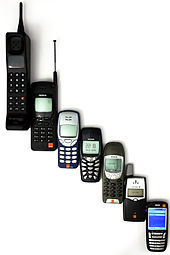Apple is sinking its teeth into healthcare’s newest trend: data-tracking. The company’s recently released software framework, called ResearchKit, focuses on research and data collection within the medical realm, and the new Apple Watch opens opportunities for healthcare marketers to read the pulse of consumers in more engaging and intimate ways.
How these two technologies can connect providers to patients may topple the apple cart of traditional healthcare-marketing campaigns and set new standards based on disease and demographic factors that drive use.
ResearchKit is an iPhone application that accelerates the exchange of information between patients and researchers, and opens a new platform of possibilities for provider-to-patient messaging. Early adopters are already tracking, managing and otherwise interacting with patients who have Parkinson’s disease, asthma, diabetes, breast cancer and heart disease as ResearchKit puts survey interactions on steroids and popularizes portable diagnostics. Patient recruitment can be fast-tracked and is aided by the “coolness factor” of the Apple brand name.
A pioneering Parkinson’s mobile application, for example, takes self-reporting to a new level, affecting dexterity, balance and memory. The app lets participants objectively self-report their status to a clinician while the device provides the monitoring in place of a doctor.
While older adults generally are twice as loyal to their primary-care physicians as are younger adults, they are likely to want to put self-reported data into their physician’s hands. This could shorten visits or even reduce the frequency, given normal findings, and create more physician capacity.
These applications create new ways to build relationships among motivated and clinically relevant customers. Apple’s impact on the medical landscape calls for new formulas of direct and digital patient engagement. This lets customized messages and trigger appointments to convey relevant information based on key indicators that come streaming in.
Just as ResearchKit impacts client and clinician interactions, Apple Watch offers consumers a new level of intimacy with their digital devices. The Apple Watch brings more than time to the wrist—the watch offers iPhone-like capabilities, such as delivering messages and social-media updates.
That traditional watch-wearers tended to be 55-plus and account for half of all watch-wearing didn’t faze Apple. Millennials (25.9 percent who wear watches) devour everything digital—74 percent used a mobile device to go online in the last month (versus 39 percent of Boomers). It will be worth watching to see if Millennials embrace the Apple Watch and find this brand extension as appealing as the iPhone.
While the mobile ground is shifting, it’s crucial to add outbound marketing efforts to mobile devices. The marketing challenge is to create the right content, with the right interactive capability. That might mean leveraging feedback from one or two customers when marketing to healthcare decision-makers, along with patients, and providing them with technology-driven ways to find services near the patient, conduct online scheduling and sign up for events.
The results could make healthcare transactions faster, earlier and less stressful for the patient.
Here’s the bottom line: Apple is bringing mobile technology to the medical realm though new apps and wearable devices. What’s next in healthcare from a company that has a vice president of medical technology and makes time to meets with the Food and Drug Administration?
Linda MacCracken, who collaborates with Cambridge Management Group on various projects, is a healthcare marketing strategist, an adjunct faculty member at Harvard Universityand author of Market Driven Strategy and Talking to My Generation.This article was originally published in the April 2015 issue of the Marketing Health Services e-newsletter.




